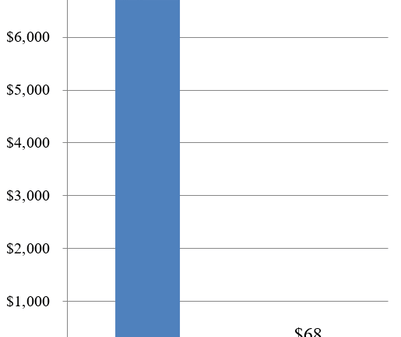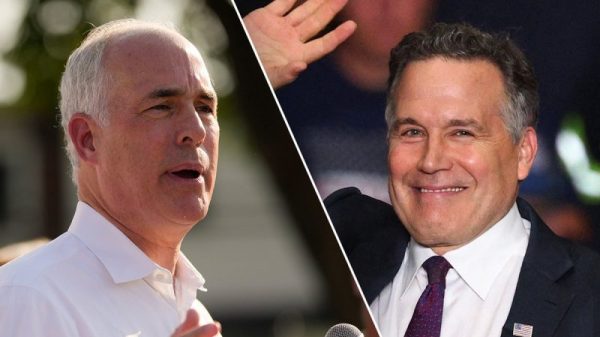Romina Boccia and Dominik Lett

The Biden administration’s unilateral executive actions could cost taxpayers $2 trillion over the next decade, according to an analysis by the House Budget Committee. Even if rising US debt wasn’t a big issue (which it is), executive spending—without congressional approval—is a serious concern. Unchecked executive authority undermines the constitutional balance of power and bypasses essential legislative oversight. Congress needs to step up and tighten controls on executive spending, starting with better transparency and stricter budget rules.
This week, the House Budget Committee will consider five bills to improve budget oversight. One of these bills, the Executive Action Cost Transparency Act (H.R.9751) by Rep. Ron Estes (KS), aims to shed light on the fiscal impact of major regulations and administrative actions.
More Transparency Needed
From student loan bailouts to expanding Medicaid eligibility and increasing food stamp benefits, the Biden administration’s rulemaking is responsible for an enormous fiscal gap, raising deficits over 10 years by $2 trillion, according to congressional estimates. Despite this magnitude, tracking new borrowing from costly regulations is challenging, making oversight difficult and enabling unchecked executive spending. The Executive Action Cost Transparency Act would require the CBO to regularly publish cost estimates, improving transparency and aiding in congressional oversight.
As we’ve previously written, improved reporting on executive spending during national emergencies is key to preventing abuse of emergency powers. The National Emergency Expenditure Reporting Transparency Act (H.R.4615 and S.2300) by Sen. Roger Marshall (R‑KS) and Rep. Paul Gosar (R‑AZ) would amend the Federal Funding Accountability and Transparency Act to require reports on National Emergencies Act expenditures, increasing transparency by bringing executive emergency expenditures to light. The House Budget Committee should consider this proposal in addition to Estes’ Executive Action Cost Transparency Act.
Strengthening Administrative PAYGO
Congress should go beyond increasing transparency, by enforcing a regulatory budget. Administrative Pay-As-You-Go (PAYGO) aims to offset costly executive actions by requiring that the executive branch provide alternative spending reductions for administrative rules that impose new costs above a certain threshold. The Fiscal Responsibility Act (FRA) of 2023 made Administrative PAYGO a statutory requirement, but the Office of Management and Budget (OMB) has not fully complied, issuing broad exemptions and claiming agencies aren’t legally required to implement offsets. This contradicts the original intent of PAYGO, which expected agencies to offset new spending.
While the administration’s excessive spending is concerning, Congress also failed to design PAYGO effectively. Statutory loopholes allow agencies to avoid offsets. By law, a rule is exempt from offsets if the direct spending increase is either:
- Less than $1 billion over the 10-year period beginning with the current year.
- Less than $100 million in any given year during such a 10-year period.
This allows agencies to strategically design or evaluate regulations in a way that would avoid triggering PAYGO requirements. For example, a rule costing $990 million over ten years with annual costs just under $100 million would be exempt, while a slightly more expensive rule would not. Likewise, a rule that might cost $5 billion or significantly more over 10 years could be automatically excluded from Administrative PAYGO if a single year costs less than $100 million. These spending exemptions are easily gamed. Additionally, the OMB can waive requirements for vague reasons, with no transparency or judicial oversight. Moreover, there is no proper scorekeeping, without which assessing the full budgetary impact of executive actions remains difficult.
Efforts to tighten Administrative PAYGO include the Strengthening Administrative PAYGO (SAP) Act. This bill seeks to codify Administrative PAYGO into law permanently, clarify exemption thresholds, and require OMB to submit any waiver determinations along with cost estimates of exempted actions to Congress. These reforms would increase transparency and help to curb the costs of executive actions.
Congress should consider going further by replacing the current thresholds test with a simpler approach, such as only automatically exempting rules that have a 10-year cost of less than $1 billion, to avoid gimmicky rule design. Limiting waivers only to emergency situations would better reflect the high hurdle that should be necessary to exempt new deficit spending from budget controls. Finally, adding a running tally of new costs, like a statutory PAYGO scorecard, would add additional transparency to the process, making it easier for budget analysts, Congress, and the public to understand how executive regulations impact the budget.
It’s on Congress to Rein in Executive Spending
Congress must reclaim its constitutional role as the guardian of taxpayer dollars. Executive spending, unchecked by legislative oversight, threatens both fiscal responsibility and the balance of power. It’s on Congress to restore accountability through tighter budget rules, transparent cost reporting, and stronger enforcement of spending controls. With trillions at stake, the need for action is urgent—Congress must step up and rein in executive overreach. The House Budget Committee’s efforts are an important start.



























